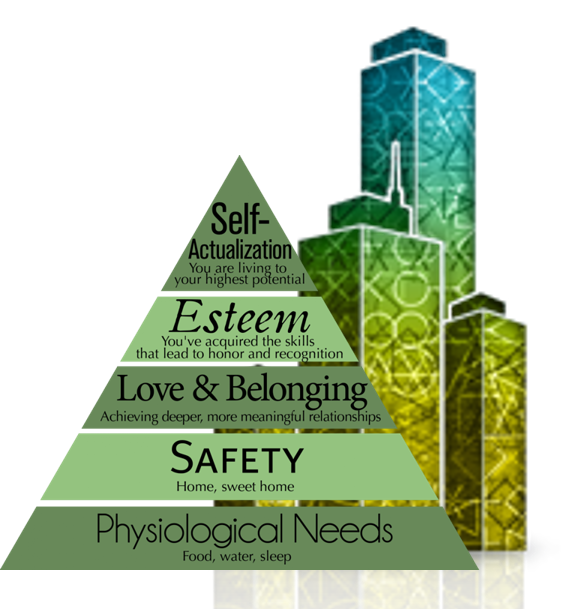Cities are like living organisms whose systems function synergistically. That’s why a holistic approach to making cities smarter is required and why cognitive computing is, for the first time, making this possible. In the past, urban systems (like water, power, transportation, and sanitation), have been operated in near isolation, even though they combine to give a city life. Because cognitive computing systems can handle many more confounding variables in their analysis, system data that were once considered in isolation can now be analyzed together. That’s one reason Kevin Chen, Vice President of Analytics and Chief Scientist for Experian’s North American DataLab, asserts that big data can be used to make better decisions and drive smart growth.[1] He explains:
“So-called, ‘smart cities’ require more than data alone — they require technologies to collect and analyze huge amounts of information and they require cross-sector solutions that can be scaled to size. ‘Smart cities’ require leaders to use Big Data for good — to make better decisions, drive smart growth and benefit society as a whole.”
Although some modern cities are being developed from the ground up to be smart, established urban areas must take an evolutionary journey towards that goal (for more on that topic, read my article entitled “From Smarter Cities to Smart Cities“). Tamsin Rutter (@TamsinRutter) offers ten steps that cities can take to further that journey.[2] They are:
1. Work out what problems need fixing.
2. Find a leader.
3. Develop a vision everyone can get behind.
4. Make a business case.
5. Share data and incentivise innovation.
6. Design from the bottom up.
7. Tread carefully.
8. Get politicians on board.
9. Educate citizens.
10. Spread the word.
Although some of those steps are self-explanatory, others need a little elaboration, since they are either unclear or appear contradictory. For example, finding a leader (Step 2) implies that top-down implementation of smart city projects is required while designing from the bottom up (Step 6) implies that grass root approaches are best. That circle is best squared by understanding that cities were formed (and continue to exist) because people have found it beneficial to live in close proximity and have agreed to abide by commonly agreed upon rules (i.e., laws and regulations). Since governments (i.e., politicians and bureaucrats) make and enforce those rules, ensuring that politicians understand how smart city initiatives can improve the quality of urban life (Step 8) is critical as is ensuring that citizens have a common understanding (Step 9). That’s why having a common vision (Step 3) is so high on the list. Today’s political environment — an environment characterized (at least in the United States) by mistrust of government and a reluctance to support public programs — makes it essential to establish a business case (Step 4) that clearly lays out the cost-benefit analysis of smart city projects.
Citizens want urban systems to be effective and run efficiently. Just consider the outcry that occurs when a water mains break, or buses and trains stop running, or potholes goes unfilled, or sewage backs up, or garbage goes uncollected, or the lights go out. Citizens don’t want to have to think about the services they receive — they simply want to enjoy them. When a holistic approach to system services is taken, things work in greater harmony. P.C. Kiran (@pckirank), AVP of Engineering at Impetus, asserts, “To provide efficient services in Smart Cities, a number of correlated sources of information should be brought under a common platform and data from such sources should be processed simultaneously.”[3] He goes on to point out that intricate relationships exist between various urban systems, which is why analyzing them holistically can reveal relationships and insights that may have previously been unknown. He also stresses that adding social media monitoring into the mix can help identify emerging problems. He explains:
“Social media plays a major role [in bringing to light] public issues. As the populace is becoming more connected to the web sphere through devices, it is easy to access information related to public issues through social media platform. The challenge is to utilize real time data from such sources to address these issues quickly. This calls for a concrete infrastructure aided by big data technology, which connects grievance issues to related departments [to] quickly … facilitate active management. Big data platforms can assist public security massively.”
How should city leaders prioritize the projects they take on? I suggest that Maslow’s Hierarchy of Needs is a good place to start. As shown in the following diagram, the most important needs start at the bottom with necessities (food, water, and sanitation) the next set of needs involves safety concerns (police, fire, transportation) and the final set of needs involve belonging and touch on operational concerns (transportation, electricity, etc.). A well-run city then fosters an environment that allows its citizens to satisfy needs even higher on Maslow’s Hierarchy.
John Chambers and Wim Elfrink (@WimElfrink) believe that a holistic approach actually defines what it means to be a smart city.[4] They explain:
“By definition, Smart Cities are those that integrate information communications technology across three or more functional areas. More simply put, a Smart City is one that combines traditional infrastructure (roads, buildings, and so on) with technology to enrich the lives of its citizens. Creative platforms and killer apps have helped reduce traffic, parking congestion, pollution, energy consumption, and crime. They have also generated revenue and reduced costs for city residents and visitors.”
My preferred definition of a smart city reflects these priorities:
A Smart City uses technology to enhance quality, well-being, and safety of citizens. It provides the means to engage more effectively and actively with its citizens and enterprises. And lastly, it monitors and enhances urban systems to help city authorities reduce costs and resource consumption for their cities.
This definition not only succinctly defines what a smart city is it establishes the right priorities for planning and implementation, namely: people then systems. Chambers and Elfrink also insist that a holistic approach works best because it involves all stakeholders. They observe:
“Smart Cities require cooperation between public and private partners. Such collaboration helps defray costs, solve pressing problems, and increase benefits for government, citizens, and industries. We have found that Smart Cities require five things: innovative and bold city leadership championing clear programs and outcomes across departments; hyper collaborative partnerships between the public and private sectors; information communications technology master plans and workshops to define and develop holistic and specific projects; and adherence to deadlines — perhaps one of the most important priorities. When the risks and rewards from projects are shared among partners, such as government leaders, private citizens, investors and technology companies, issues are more likely to be resolved and projects are more likely to be completed, because all parties have a stake in their investments. These partnerships are key to managing and financing projects that require advanced infrastructure and technology architecture.”
I agree with Chen, who concludes, “We have the potential to improve the efficiency of government and build smarter cities. To achieve such goal, we need to encourage data sharing, standardization of data, and the application of the data science to use Big Data for good and truly transform urban life.”
Footnotes
[1] Kevin Chen, “Smart cities of the future,” The Hill, 10 August 2015.
[2] Tamsin Rutter, “10 steps to building a smart city,” The Guardian, 6 August 2015.
[3] P.C. Kiran, “The Road to Smart Cities: Big Data,” iamwire, 14 August 2015.
[4] John Chambers and Wim Elfrink, “The Future of Cities,” Foreign Affairs, 31 October 2014.





